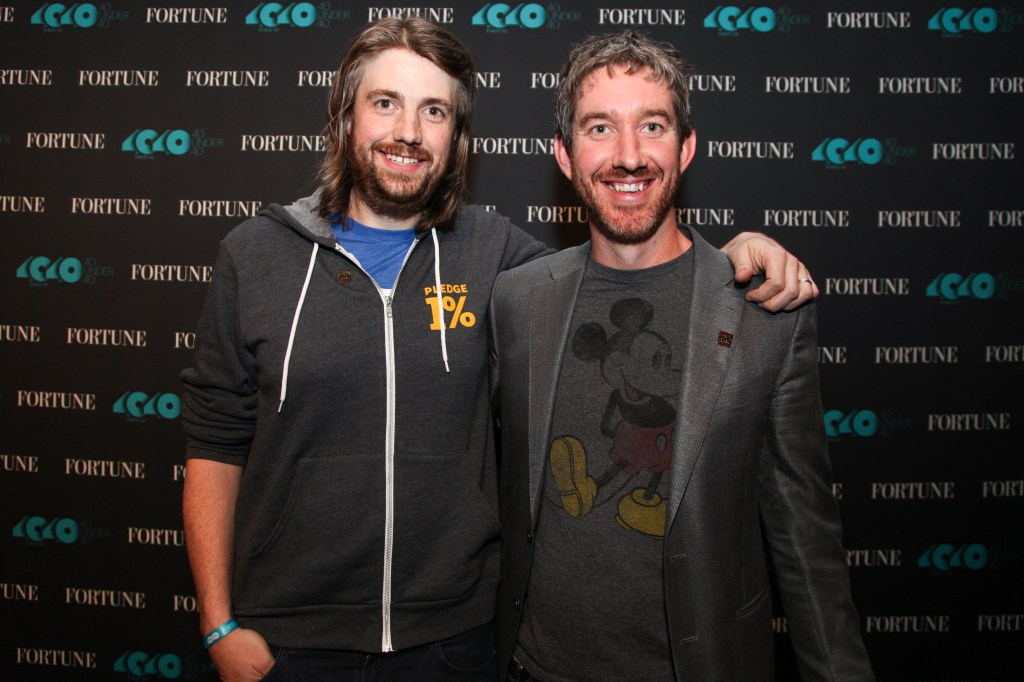Is a co-CEO model the path to innovation and success?

Mike Cannon-Brookes and Scott Farquhar started Atlassian 20 years ago giving them an avenue to be authentic rather than having to conform to others’ expectations of what a company should look like.
Atlassian has since grown to be a global corporate innovator, leading the way by embedding social responsibility and using team work as a playbook for new ways working.
This is all while everyone at the company has two bosses. Co-CEOs Mike and Scott.
Is this co-CEO model the path to such innovation and success? More recently we have seen other examples of co-CEO roles and shared leadership in companies such as examples Autodesk, Ceridian, Oracle, SAP, Workday, Waymo and Salesforce. In Australia companies like Macquarie-backed Local, Tractor Ventures and previously, Judo Bank embraced leadership pairs, writes Professor Suzanne Young, Associate Dean (Academic Partnerships), La Trobe Business School, La Trobe University.
A recent article in HBR (Is It Time to Consider Co-CEOs? (hbr.org) discusses this as a viable model in contrast to traditional thinking where such sharing of responsibilities would be viewed negatively.
It was thought the co-CEOs would lead to conflict, inconsistency, delays and confusion. HBR found that it has in fact led to better than average shareholder returns especially for companies embarking on technology-based transformation.
It hasn’t been successful every time. Deutsche Bank tried it for six years but reverted back in 2018.
Whole Foods Market, also after a six year juggle, confirmed founder John Mackey would be the only CEO, with a spokesperson telling Forbes at the time that “the board made the decision to streamline the decision making process, so we could accelerate faster.”
Keeping egos in check has been pointed out to be one of the major problems of the joint CEO model with power struggles amongst divergent opinions (Meet the joint CEOs (afr.com) Is Having Joint CEOs a Viable Model for Companies – Bold Business).
However in a time of complexity such as we are facing at the moment, bringing together divergent skills can bring about benefits as each person gets to focus on different parts of the business, sharing power and accountability, whilst jointly developing mechanisms for conflict resolution.
Is this a model that is now suited to the times?
This may be what new start-ups are looking for – one suited to younger generations (Gen Z and Millennials) who are desiring a different model of balancing work and family life. Covid has brought to the fore the importance of leaders who are flexible, caring, and honest, who demonstrate empathy and humanity. A model where organisational culture brings community into the centre of their being, where CEOs have time to think, and have downtime, and to be able to utilise their unique skills, and not be pressured to have to do it all and be expert at everything.
Covid has demonstrated that a shock can bring about a change to established ways of working. Covid showed that business can pivot to ways of operating that not that long ago seemed incomprehensible. The idea that employees would not be at work demonstrating their dedication to the organisation five or six days a week from 8 am to 6 pm was thought to lead to lower productivity, inferior outcomes, and poorer career opportunities through not being visible in the workplace. Instead, workforces have become distributed, digital technology has created opportunities for transformation and we have moved away from leaders using traditional leadership styles such as ‘management by walking around’.
Now if we can picture places of work where leaders can actually demonstrate news ways of working through their own actions, we may finally bring about types of workplaces that have been promised for decades- where telecommuting, job sharing, working from home, and flexible work arrangements are accepted and even encouraged. Where leaders actually model the types of behaviour they themselves are seeking in their employees.
Through adopting the joint CEO model leaders can showcase diversity of thought. They can bring together skills from two leaders often not found in a single person or not being demonstrated due to time pressures. One person can be focused on technological transformation alongside one focused on functional business activities such as marketing, finance and operations.
Sharing of values between the two leaders and transparency around decision-making is key. Moving away from a ‘command and control’ structure to one that is based on trust and communication may just fit the times we are in. Lessening the risk of over-reliance on a single person helps in succession planning. In Oracle’s case one co-CEO, Mark Hurd, stepped down due to health issues leaving the other, Safra Catz, to continue on solely in the job since 2019.
Gen Z and Millennials are desiring to work for organisations that demonstrate their values, that are more social, that allow autonomy and personal development, and that demonstrate their diversity credentials through their operations not through their paper-based statements.
They are seeking workplaces that address climate change, that prioritise all stakeholders and whose sole focus is not solely profits, and that engage with community.
At a time of immense worker shortage, organisations are seeking ways of standing out from other businesses. Sharing of leadership demonstrates the type of values that these younger workers are seeking. The Covid generation may be the one that forces leaders to adopt non-conventional models.
Professor Suzanne Young, is Associate Dean (Academic Partnerships), La Trobe Business School, La Trobe University
Further reading
Meet the one Australian CEO on Forbes’ Future of Work 50